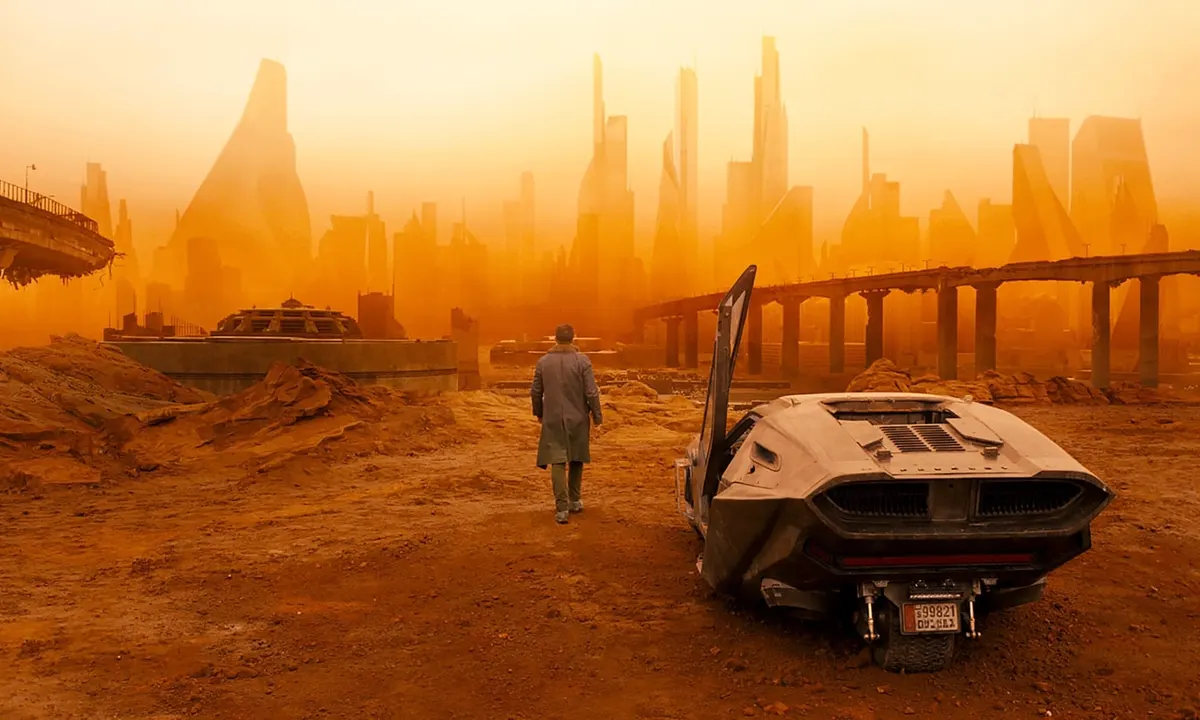
Coming thirty-five years after a cult classic, Blade Runner 2049 is an unlikely sequel. Ridley Scott’s Blade Runner saw little commercial success at the box office, despite becoming a cult classic in science fiction films. As a member of the “cult” following, I immediately was ready to hate 2049 upon announcement. The original Blade Runner provided audiences with one of the most challenging and ambitious films of its time with a story that was completely self-contained. Even the thought of a sequel was akin to blasphemy to me. Luckily, Denis Villeneuve and his team not only quelled my fears but managed to create a sequel that is a perfect love letter to its predecessor.
Based on the novel Do Androids Dream of Electric Sheep? by Philip K. Dick, Blade Runner explored the philosophical and moral ramifications of artificial intelligence (in entities known as “Replicants”) while creating a world that felt large and wonderous. While its plodding, methodical exploration of complex topics likely contributed to its commercial failure, Blade Runner’s influential legacy lies in its ambitious narrative, impressive use of practical effects, and unflinching commitment to its concepts. It seamlessly melded the aesthetics of science fiction and neo-noir films of the past to help define the foundation of what would become popularized as “cyberpunk.”
2049 picks up where Blade Runner left off: Los Angeles thirty years later. It features Ryan Gosling as the lead role of “K,” as well as Harrison Ford in a reprisal role of Blade Runner’s original protagonist, Rick Deckard. The legendary Hans Zimmer and Roger Deakins were also recruited as composer and cinematographer, respectively.
With this all-star ensemble, 2049 follows faithfully in its predecessor’s footsteps. It manages to bring back the dark and somber atmosphere of the world with stunning new detail thanks to modern technology. The team of Villeneuve and Deakins delivers visually stunning wide shots, utilizing high contrast colors to break up the bleak darkness of the cyberpunk city. Bright oranges and neon blues wash through scenes in a way that makes you feel as though you are looking at a vivid painting more so than a movie screen.
Of course, stunning visuals alone do not make a good movie. Luckily, Hans Zimmer takes great care in composing a score befitting the narrative and visual mood of the film. Zimmer utilizes long, deep, and menacing drones while setting up scene transitions. 2049’s soundscape feels clear and pristine until you are suddenly awash in heavily distorted droning and, oddly enough, Tibetan throat singing. These transitions are even more impactful when the movie is cutting to scenes that depict the large, sprawling metal jungle of skyscrapers and monuments that make up the metropolis. The soundtrack feels as if it was made specifically with the idea of engulfing the viewer in dread and awe.
Villeneuve brought back his editor, Joe Walker, for this project. He and Walker worked together previously on Sicario and Arrival and are currently working together again on Dune. An editing style that seems common in their work together is that they are not afraid to leave longer amounts of time between cuts and they are not afraid to let a scene go longer without any dialogue. Many times, this can cause pacing issues in a movie, leaving the viewer to feel that the movie is much longer than it is, but I do not believe they run into that issue here. While criticism could be levied against its runtime and its slow-burn pacing, I think 2049 earns it. Each scene takes its time but is filled with enough visual information to keep the viewer engaged the entire time. While some may say that there could have been more pruning done during the edit, I think that it would have caused 2049 to lose some if its intense and imposing atmosphere.
Ryan Gosling is the piece that ties everything else together for the movie. His performance of Officer K grounds 2049’s grandiose world in something human. A bit of irony lies in the fact that “K” is a replicant, not a human. Gosling’s trademark “stoic yet vulnerable” style shines through as his character has to explore the complexities of being “artificial” in a world of humans. The viewer follows “K” navigating the world as a being which has all the intellectual and emotional makeup of a human while being condemned to a society that finds his kind defective.
Gosling is surrounded by an extremely talented cast, but most importantly is joined by a much older Harrison Ford. Although Ford doesn’t really appear until after halfway through the film, he provides more than just fan service. Now a retired blade runner hiding in isolation, Officer Deckard completes his own journey of emotional closure from the previous film. His story here, while not exceedingly deep, was delicately and tastefully written so as not to disturb anything about the original story. The script took great care in ensuring that the Deckard we see on screen thirty-five years later is true to our memories. With all the impressive technical muscles that 2049 flexes, it would all be for nothing without this detail.
Blade Runner 2049 is a monolithic love letter to one of cinema’s greatest and most influential works. It stands as a towering example of how a sequel or reboot should be done. It displays respect and admiration through its meticulous design and dedication to the source material. During a time of endless reboots and sequels it is easy to automatically reject them out of principle, but Villeneuve shows us with 2049 that there is hope after all.

